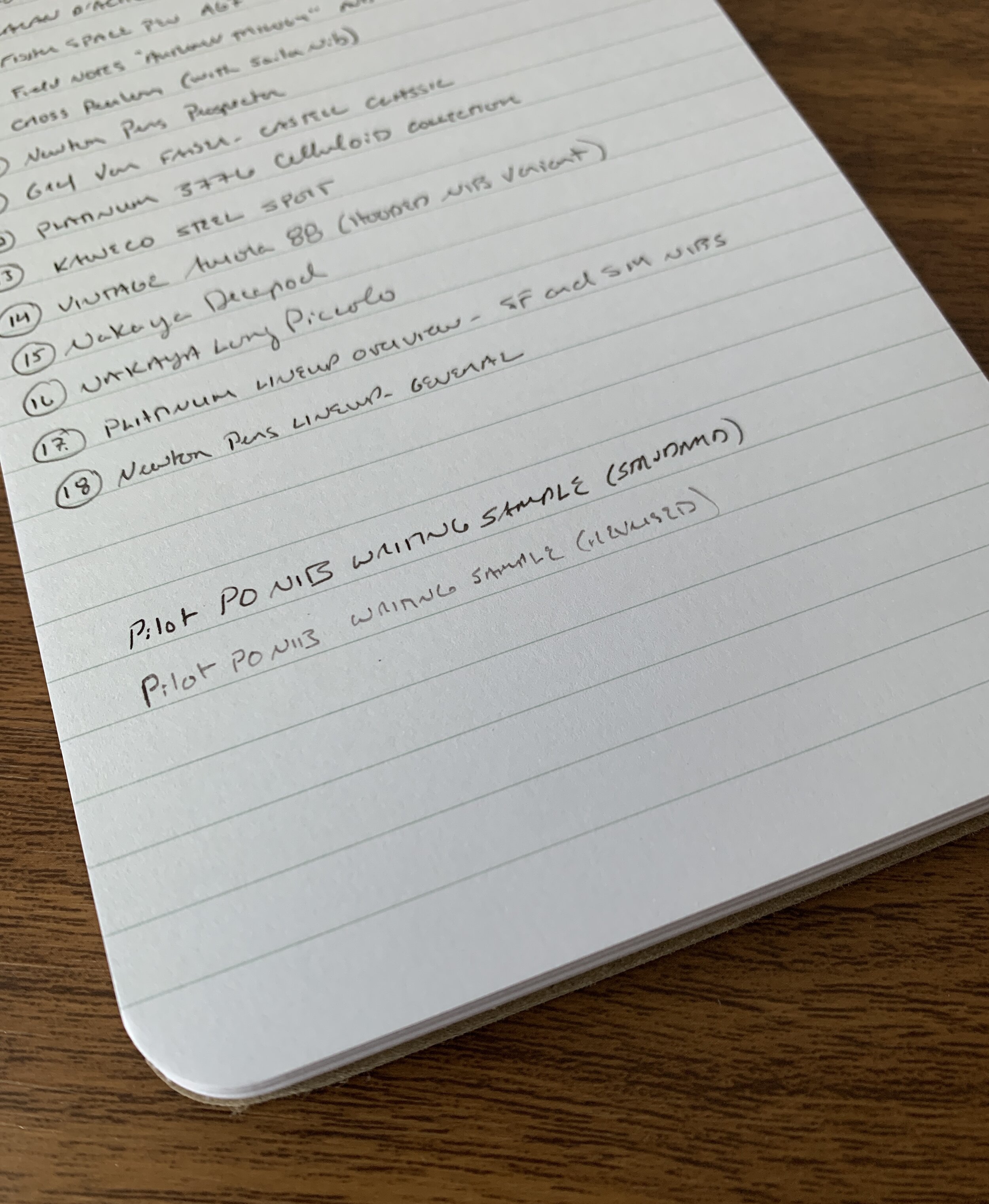The holiday shopping season is here and we’re doing our best to restock as much as we can as fast as we can! This week we received a restock of Pilot fountain pens, including additional Pilot Custom 823s and many favorite colors of Iroshizuku ink such as Asa Gao, Yama Budo, and Kon Peki. We also received more Tom’s Studio Lumos and Wren refillable fineliners. Finally, as I noted yesterday both on the blog and on YouTube, we’ve also introduced more desk accessories, including Zenith Staplers from Italy, and we have a wide range of new stickers and washi available from MT Tapes and iLootPaperie!
It’s not just higher-end Pilot that we have back in stock. In addition to the Custom 823, we also have more of the new Pilot Prera fountain pens, as well as the new Kakuno Special Editions!
I have been receiving e-mails from many of you inquiring about holiday gift ideas, and I will respond as quickly as I can. I did, however, want to issue a general P.S.A. that if you are looking for holiday delivery in December, please get orders in as quickly as possible. While we ship within 2-3 business days, both USPS and UPS will likely begin experiencing shipping and delivery delays starting around Thanksgiving, if not already, and many are predicting that this year will be worse. Building in time to handle lost packages, insurance claims, and time for shipping any replacements will help us ensure timely delivery of gifts.
Our Nashville shop is open this week Thursday and Friday from 1pm-6pm, and from 10am-6pm on Saturday. Next week we will be closed on Thanksgiving Day (Thursday) but will be open regular hours Friday and Saturday. Hope to see you there!
Pilot Custom 823 Fountain Pens. We have the Pilot Custom 823 available in all colors and most nib sizes, including Signature nibs in the Amber acrylic. Read more about the Custom 823 and why we love this high-capacity vacuum filler here.
Tom’s Studio Lumo Pro Duo in Clementine. Tom’s Studio has released its dual-tip fineliner in a warm matte orange finish that’s perfectly timed for autumn and the holiday season! We also received a restock of most colors of the standard Lumos, and have special edition “Splash” and Titanium finishes as well.
Tom’s Studio Wren in Clementine. I was surprised to see a Clementine Wren as well! For those looking for a pocketable fineliner with a standard writing tip, the Wren is an excellent option and now features the same warm matte orange Clementine finish. Standard color options are also restocked.
Diplomat Viper Fountain Pens and Rollerballs. We have additional Viper fountain pens in Blue, Black, and Brown, with Green on the way. All Rollerballs are back in stock. The Viper is an excellent hooded-nib fountain pen at an accessible price point, with a highly usable F/M nib.
Zenith 590 and Zenith 591 Plier-Style Staplers. I couldn’t resist these cool desk accessories from Italy, available in five different color combinations chosen by us for the shop. We showcased these on the blog and in a YouTube demonstration video. Compatible staples are also available.
Life Airmail Writing Pads and Envelopes. We now once again offer both the Life Airmail Writing Pads and matching envelopes. These feature lightweight, yet still ink-friendly, onionskin paper like that used for classic Airmail written correspondence.
Levenger Notabandeau Book Bands. These elastic book bands will fit around an A5 or similar notebook, as well as a standard hardcover book, for those who like to be able to tuck pens, glasses, and other accessories for a lightweight and streamlined carry.
Levenger Library Card Bookmarks. Bookmarks are another accessory obsession of mine, and Levenger makes great ones. I love bookmarks that double as notecards for annotation purposes. These are inspired by vintage library cards! Tent-style notetaking bookmarks are also available.
MT Washi Tapes. We have both restocks and new arrivals from the MT “Encyclopedia” series, as well as many of the popular “Maps and Travel” Patterns. There is also a new coffee-themed “Upcycle” series themed around coffee that uses paper from recycled coffee filters.
iLootPaperie Stickers and Enamel Pins. We have lots of fun vinyl stickers and enamel pins from our friends at iLootPaperie, featuring themes ranging from snail mail to typewriters.
The Zenith 590 comes in two multi-color finishes!
